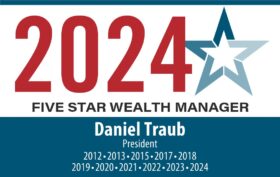It was looking like the third quarter was going to be modestly profitable. Then interest rates started rising. The yield on 10-year Treasurys, which had been bouncing between 3.5% and 4% for most of the last year, rose from 4% to 4.8% from the end of July to early October.
As interest rates rose, a 3% gain for the S&P 500 early in the quarter turned into a 3.3% loss at the end.
Most areas of the stock market performed even worse: international stocks -4%, small caps -5.1%, tech stocks -5.7%, healthcare -7%, real estate -7.5%, utilities -8%.
As you would expect with the rise in interest rates, bond owners didn’t fare very well either. The US Aggregate Bond Index (“the Agg”) was down 3.2% and long-term bonds were down 7%!
Why the sudden rise in interest rates?
While no one can say for sure, I’d point to a few factors. First the price of oil rose from $68 per barrel at the start of the summer to $91 by the end of September. Second, the US economy remains resilient. People keep spending money and unemployment remains quite low.
When the Federal Reserve Bank (“the Fed”) announced it would take a breather from raising rates in September it may have been premature. The battle against inflation has not been won yet.
The market, which had been struggling, took a turn for the positive on Friday, October 6. What happened?
On this day the Labor Department announced that payrolls grew by 336,000, nearly double the amount expected.
The surprising strength in the labor market, coupled with the rise in rates over the previous 5 weeks, convinced many market observers that the Fed would be forced to act by raising interest rates at least once more before the end of the year.
The mere prospect of the Fed continuing its fight to tame inflation was enough to calm the markets. Stocks rose 1% on October 6.
Here is a summary of how an economist would think this through (brace yourself): A strong labor market means inflation might be getting out of control, which means higher interest rates, which is bad for stocks. However, we now think the Fed will continue raising rates to fight inflation, and keeping inflation in control is good for stocks. So, let’s buy stocks.
Got it? Great. There will be a test next week. Don’t worry, it will be open book, er, I mean open newsletter.
The point is that despite the many negative things going on across the world today (worker strikes, wars, political upheaval) there is one thing that matters most to the markets: Will the Fed successfully guide the economy to a soft landing?
A soft landing is when the Fed raises rates just enough to cool the economy and forestall inflation, but not so much that it would cause a recession.
Loyal Vantage readers know I have been more optimistic than most. So far, I have been right (i.e. there has not been a recession despite the consensus view to the contrary). I still feel this way, though I admit that if interest rates keep rising my resolve may weaken.
Tempo Financial Advisors’ 3rd Quarter Investment Performance
Tempo performance in the third quarter ranged from good to very good to excellent.
Let’s start with the good. Tempo Lifestyle account returns for the quarter ranged from -2.5% for conservative accounts to -3.5% for more aggressive accounts. These results should not surprise you once you learn that both stocks and bonds lost over 3% for the quarter (see above). They also match their respective benchmarks.
Some of our positions held up better than others relative to the broad benchmarks (i.e. the S&P 500 & the Agg).
On the equity side our overweight in financial (+0.6) was helpful, while our exposure to small caps (-5%), international (-4%) and infrastructure (-9%) hurt performance.
Happily, all our alternatives (managed futures +3%, relative value arbitrage +0.7%, multi-alternative +1.3%, event driven +3.3%, long-short equity +1%, commodities +2.3) and most of our bond positions (bank loan +3%, short term high yield +1.2%, non-traditional bond 0.0%) did much better than the Agg.
Longer term results for Lifestyle clients are quite attractive. Over the last 12 months Lifestyle client returns ranged from +12% to +16% (conservative to aggressive).
In the very good category is Tempo Dynamic Growth. Tempo’s return for the third quarter was -0.8%, compared to the benchmark return of -2.0%.
Dynamic Growth has been and continues to be at our lowest allowed equity allocation (40%). This positions us well for rough markets such as the past few months. On the other hand, if the market does particularly well at this point, we will likely lag.
Tempo Diversified Income and Tempo Dynamic Income fared excellently. One of my favorite things to accomplish in investing is to make money in the face of a down market. That is exactly what happened for both these strategies.
As you now know, the US Aggregate Bond Index was down 3.2% in the third quarter. Tempo Diversified Income and Tempo Dynamic Income returned +0.2 & +1.2%, respectively. I call these home runs!
Over the past 12 months the Agg is up 0.7%. This compares to returns of +4.2% and +4.7% for Tempo Diversified Income and Tempo Dynamic Income, respectively.
Reminder
Please contact us if there has been a change in your financial circumstances that would warrant a fresh perspective on your portfolio.
Daniel J. Traub

